If we say that eyes are the windows of human mind, doors and windows are undoubtedly the windows of House mind!
A door and window is not only used to see the outside scenery and keep indoor and outdoor air circulation, but also related to the quality of our home life. With the development of the society and the progress of the times, today's door and window glass is no longer just a tool to prevent wind and rain. Many people begin to pay attention to the comfort and comfort of the home environment and the energy saving and environmental protection of the door and window glass.

So, how important is the energy saving of doors and windows to the house? According to the data of national authoritative departments, 70% of building energy conservation is in doors and windows, while 70~90% of door and window Energy conservation is in glass. This is because doors and windows are the opening lighting part of the building house and the weakest link of the house. The energy loss through doors and windows glass is relatively large, so in the building of the House, the performance of doors and windows glass is very important! It can be said to be a measure of the quality of the home environment.
Among them, the thermal insulation performance of doors and windows is one of the main indicators of the performance of doors and windows, and other properties include wind pressure resistance, watertightness, air tightness, sound insulation, etc. At present, the country has high requirements for building energy conservation. Beijing has already required building energy conservation to reach 75%, and the K value of doors and windows is less than or equal to 2.0w/(m2k). So what factors mainly affect the insulation of Windows? The following editor will make a comprehensive interpretation from the form of window switch, the material of window frames and the material of glass.
Window opening method affects thermal insulation
in daily life, our common Windows mainly include sliding window, casement window, fixed windows, suspended windows, turning windows and other styles. Different window opening methods have different thermal insulation effects.

Sliding window
about sliding window points, push and pull up and down, many families use sliding window, with car window shade, anti-mosquito effect is great, and it does not occupy indoor space, the appearance is beautiful, the price is also affordable, very popular. However, it also has its disadvantages. The window can be opened at most by half, and the sealing and heat insulation effects are just so-so.
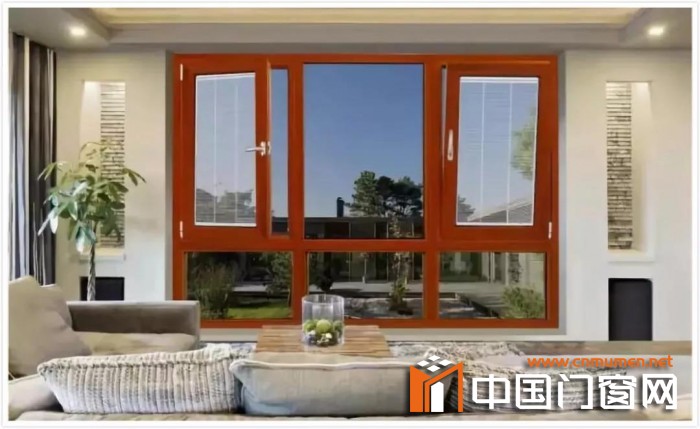
Casement window
casement window open area is large, ventilation is very good, heat insulation, sealing is very good, the disadvantage is that it needs to occupy a large amount of outdoor space, the house with a higher floor, if there is wind and rain, the windows are not closed, there is a certain danger.

Fixed windows
the large area of fixed windows is also very popular. It is very good to get the outdoor beauty. It not only has good lighting, but also has good sealing and heat insulation. However, it cannot be opened and can only be used in a certain part of the home, because it can't open the window for ventilation.
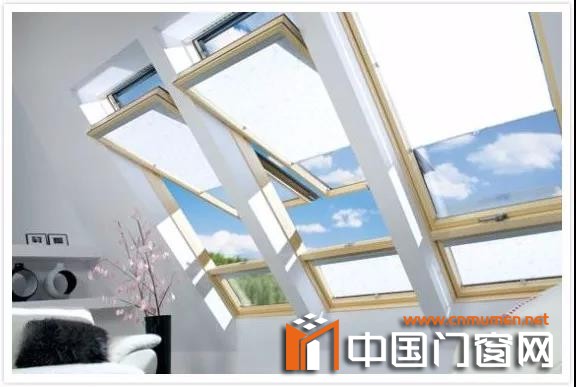
Suspended window
suspension window refers to the window opened along the horizontal axis, which is generally divided into upper suspension window, lower suspension window and middle suspension window. The range that can be opened is not large and the ventilation effect is general, but it can be sealed well and has good heat insulation performance, commonly used in bathroom and kitchen space.
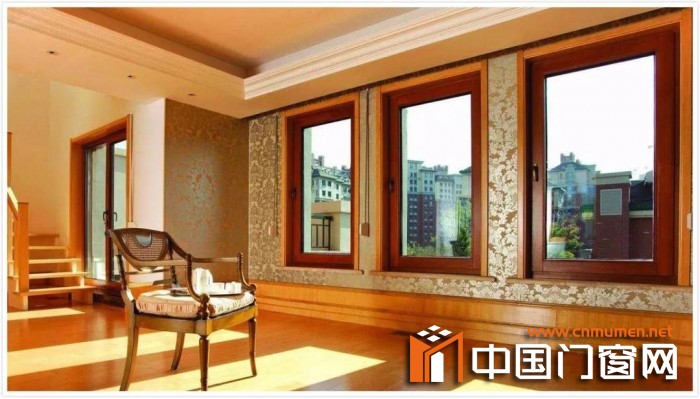
Editor's suggestion: Each window has its unique personality. Considering the aspect of heat insulation and energy saving, the sealing heat insulation of sliding window is poor, the sealing performance of fixed windows is good, and the sealing heat insulation performance of casement window is good, for houses with high heat insulation requirements, the window style of casement window can be adopted.
Window frame material affects thermal insulation
the window frame is the backbone part of the window, and the tightness and thermal conductivity of its material will also affect the indoor temperature. Therefore, when selecting window frames, we must analyze the thermal insulation performance of window frames. In daily life, common window materials include wooden window frame, plastic steel window frame and aluminum window frame (divided into two types: ordinary aluminum alloy and bridge-cutoff aluminum alloy). These three types of heat insulation properties are also quite outstanding, it is a popular window material.
Wooden window frame
wooden window frame is a window frame made of wood. Wood should be the most perfect form frame material, which has obvious advantages in terms of heat insulation, sound insulation and so on, and the inherent texture and natural patterns are more exciting, however, the cost of wooden windows of high quality may be relatively high.
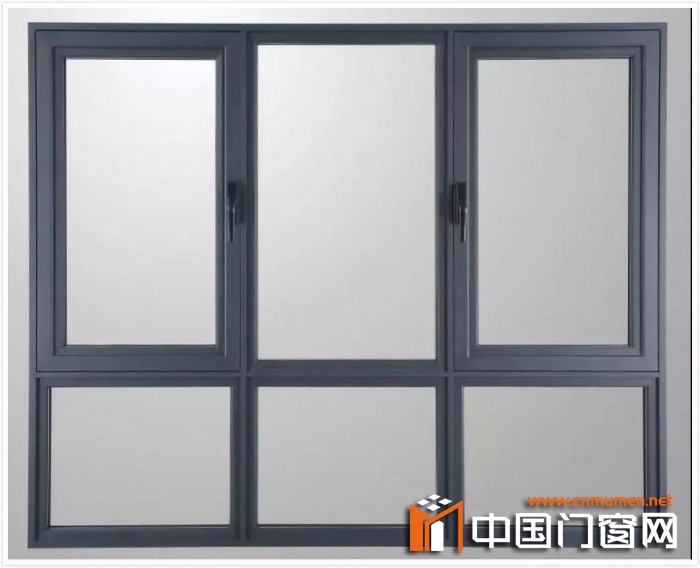
Ordinary aluminium windows
ordinary aluminium windows are made of aluminum alloy extruded profiles as frames, mullions and fans. Aluminum alloy is a good conductor of heat, and the external and indoor temperature will be easily transmitted with aluminum window frame, thus the thermal insulation performance is poor.
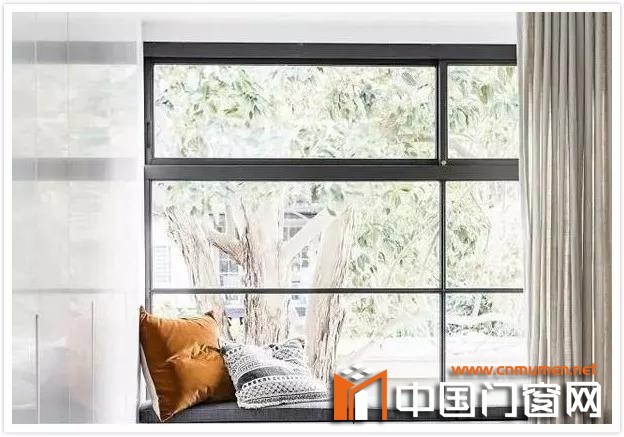
Broken Bridge aluminium windows
the Broken Bridge aluminium windows is to penetrate the heat insulation strip in the middle of the aluminum profile to break the aluminum profile to form a broken bridge, effectively preventing the conduction of heat.
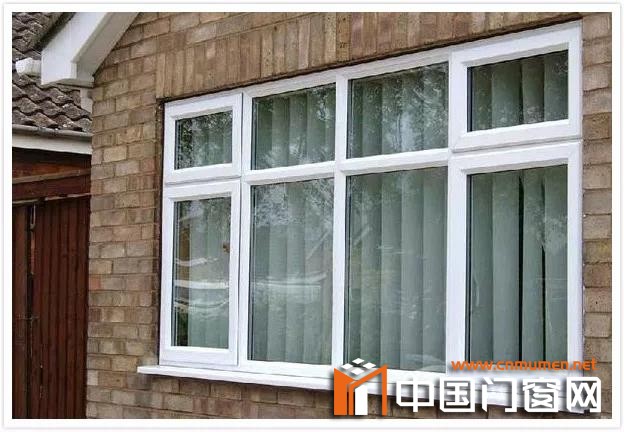
Plastic steel window
plastic steel windows are made of plastic materials, so the weight is small, the heat insulation performance is good, and the price is relatively low. Because we often have to face the wind, rain and sun, so what people are most concerned about is the anti-aging problem of plastic steel windows. In fact, the service life of high quality plastic-steel windows can reach about one hundred years.

Suggestions: plastic steel windows and broken bridges aluminium windows have better sealing, heat preservation and heat insulation, so the demand for this is relatively high. You can choose suitable window frame materials according to your preferences and economic capabilities.
Glass affects thermal insulation
ordinary glass has very strong thermal conductivity and wants to block outdoor thermal radiation and ultraviolet rays. Therefore, when decorating, we must consider the choice of glass and choose glass that can better heat preservation and insulation. Commonly used insulating glass includes heat absorbing glass, heat reflecting glass, insulating glass and multi-screen glass.
Heat absorbing glass
the shading coefficient of heat absorbing glass is lower than that of transparent glass, and its shading principle is to weaken its entry into the room by absorbing solar energy.
However, the heat absorbing glass will block part of the solar radiation heat energy no matter in summer or winter, so it can be used in the southern region where heat is mainly prevented, but not in the northern region. Heat absorbing glass is actually the absorption of radiation, and the heat absorbed by the glass will eventually be transferred to indoor and outdoor. The heat absorbing glass has no selectivity to the spectrum, which not only reduces the transmission of sunlight, but also hinders the projection of visible light, which will affect the lighting.

Heat reflective glass
heat reflective glass, also known as sunlight control coated glass, is a kind of coated glass that reflects sunlight. Heat reflective glass has strong reflection on visible light and long wave radiation, its function is to restrict solar radiation from entering the room.
However, the thermal insulation of thermal reflective glass is almost the same as that of transparent glass, so it is not suitable for cold areas with large temperature difference indoors, but in hot areas with strong light, its thermal insulation effect is very good.
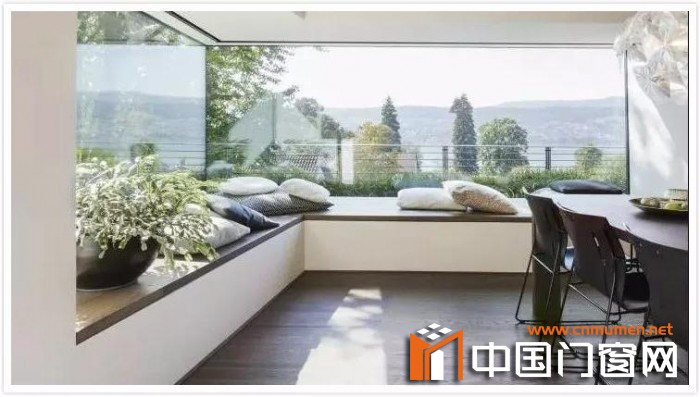
Hollow glass
hollow glass is composed of two or more layers of flat glass, which is sealed around with high air tightness adhesive and filled with dry gas in the middle, thus limiting the temperature difference heat transfer of glass and effectively reducing the heat transfer coefficient of glass. The maintenance cost of hollow glass is relatively high, and in summer nights, the good thermal insulation performance of hollow glass makes it difficult for indoor heat to be distributed, which is unfavorable to energy conservation.


 So, how important is the energy saving of doors and windows to the house? According to the data of national authoritative departments, 70% of building energy conservation is in doors and windows, while 70~90% of door and window Energy conservation is in glass. This is because doors and windows are the opening lighting part of the building house and the weakest link of the house. The energy loss through doors and windows glass is relatively large, so in the building of the House, the performance of doors and windows glass is very important! It can be said to be a measure of the quality of the home environment.
Among them, the thermal insulation performance of doors and windows is one of the main indicators of the performance of doors and windows, and other properties include wind pressure resistance, watertightness, air tightness, sound insulation, etc. At present, the country has high requirements for building energy conservation. Beijing has already required building energy conservation to reach 75%, and the K value of doors and windows is less than or equal to 2.0w/(m2k). So what factors mainly affect the insulation of Windows? The following editor will make a comprehensive interpretation from the form of window switch, the material of window frames and the material of glass.
Window opening method affects thermal insulation
in daily life, our common Windows mainly include sliding window, casement window, fixed windows, suspended windows, turning windows and other styles. Different window opening methods have different thermal insulation effects.
So, how important is the energy saving of doors and windows to the house? According to the data of national authoritative departments, 70% of building energy conservation is in doors and windows, while 70~90% of door and window Energy conservation is in glass. This is because doors and windows are the opening lighting part of the building house and the weakest link of the house. The energy loss through doors and windows glass is relatively large, so in the building of the House, the performance of doors and windows glass is very important! It can be said to be a measure of the quality of the home environment.
Among them, the thermal insulation performance of doors and windows is one of the main indicators of the performance of doors and windows, and other properties include wind pressure resistance, watertightness, air tightness, sound insulation, etc. At present, the country has high requirements for building energy conservation. Beijing has already required building energy conservation to reach 75%, and the K value of doors and windows is less than or equal to 2.0w/(m2k). So what factors mainly affect the insulation of Windows? The following editor will make a comprehensive interpretation from the form of window switch, the material of window frames and the material of glass.
Window opening method affects thermal insulation
in daily life, our common Windows mainly include sliding window, casement window, fixed windows, suspended windows, turning windows and other styles. Different window opening methods have different thermal insulation effects.
 Sliding window
about sliding window points, push and pull up and down, many families use sliding window, with car window shade, anti-mosquito effect is great, and it does not occupy indoor space, the appearance is beautiful, the price is also affordable, very popular. However, it also has its disadvantages. The window can be opened at most by half, and the sealing and heat insulation effects are just so-so.
Sliding window
about sliding window points, push and pull up and down, many families use sliding window, with car window shade, anti-mosquito effect is great, and it does not occupy indoor space, the appearance is beautiful, the price is also affordable, very popular. However, it also has its disadvantages. The window can be opened at most by half, and the sealing and heat insulation effects are just so-so.
 Casement window
casement window open area is large, ventilation is very good, heat insulation, sealing is very good, the disadvantage is that it needs to occupy a large amount of outdoor space, the house with a higher floor, if there is wind and rain, the windows are not closed, there is a certain danger.
Casement window
casement window open area is large, ventilation is very good, heat insulation, sealing is very good, the disadvantage is that it needs to occupy a large amount of outdoor space, the house with a higher floor, if there is wind and rain, the windows are not closed, there is a certain danger.
 Fixed windows
the large area of fixed windows is also very popular. It is very good to get the outdoor beauty. It not only has good lighting, but also has good sealing and heat insulation. However, it cannot be opened and can only be used in a certain part of the home, because it can't open the window for ventilation.
Fixed windows
the large area of fixed windows is also very popular. It is very good to get the outdoor beauty. It not only has good lighting, but also has good sealing and heat insulation. However, it cannot be opened and can only be used in a certain part of the home, because it can't open the window for ventilation.
 Suspended window
suspension window refers to the window opened along the horizontal axis, which is generally divided into upper suspension window, lower suspension window and middle suspension window. The range that can be opened is not large and the ventilation effect is general, but it can be sealed well and has good heat insulation performance, commonly used in bathroom and kitchen space.
Suspended window
suspension window refers to the window opened along the horizontal axis, which is generally divided into upper suspension window, lower suspension window and middle suspension window. The range that can be opened is not large and the ventilation effect is general, but it can be sealed well and has good heat insulation performance, commonly used in bathroom and kitchen space.
 Editor's suggestion: Each window has its unique personality. Considering the aspect of heat insulation and energy saving, the sealing heat insulation of sliding window is poor, the sealing performance of fixed windows is good, and the sealing heat insulation performance of casement window is good, for houses with high heat insulation requirements, the window style of casement window can be adopted.
Window frame material affects thermal insulation
the window frame is the backbone part of the window, and the tightness and thermal conductivity of its material will also affect the indoor temperature. Therefore, when selecting window frames, we must analyze the thermal insulation performance of window frames. In daily life, common window materials include wooden window frame, plastic steel window frame and aluminum window frame (divided into two types: ordinary aluminum alloy and bridge-cutoff aluminum alloy). These three types of heat insulation properties are also quite outstanding, it is a popular window material.
Wooden window frame
wooden window frame is a window frame made of wood. Wood should be the most perfect form frame material, which has obvious advantages in terms of heat insulation, sound insulation and so on, and the inherent texture and natural patterns are more exciting, however, the cost of wooden windows of high quality may be relatively high.
Editor's suggestion: Each window has its unique personality. Considering the aspect of heat insulation and energy saving, the sealing heat insulation of sliding window is poor, the sealing performance of fixed windows is good, and the sealing heat insulation performance of casement window is good, for houses with high heat insulation requirements, the window style of casement window can be adopted.
Window frame material affects thermal insulation
the window frame is the backbone part of the window, and the tightness and thermal conductivity of its material will also affect the indoor temperature. Therefore, when selecting window frames, we must analyze the thermal insulation performance of window frames. In daily life, common window materials include wooden window frame, plastic steel window frame and aluminum window frame (divided into two types: ordinary aluminum alloy and bridge-cutoff aluminum alloy). These three types of heat insulation properties are also quite outstanding, it is a popular window material.
Wooden window frame
wooden window frame is a window frame made of wood. Wood should be the most perfect form frame material, which has obvious advantages in terms of heat insulation, sound insulation and so on, and the inherent texture and natural patterns are more exciting, however, the cost of wooden windows of high quality may be relatively high.
 Ordinary aluminium windows
ordinary aluminium windows are made of aluminum alloy extruded profiles as frames, mullions and fans. Aluminum alloy is a good conductor of heat, and the external and indoor temperature will be easily transmitted with aluminum window frame, thus the thermal insulation performance is poor.
Ordinary aluminium windows
ordinary aluminium windows are made of aluminum alloy extruded profiles as frames, mullions and fans. Aluminum alloy is a good conductor of heat, and the external and indoor temperature will be easily transmitted with aluminum window frame, thus the thermal insulation performance is poor.
 Broken Bridge aluminium windows
the Broken Bridge aluminium windows is to penetrate the heat insulation strip in the middle of the aluminum profile to break the aluminum profile to form a broken bridge, effectively preventing the conduction of heat.
Broken Bridge aluminium windows
the Broken Bridge aluminium windows is to penetrate the heat insulation strip in the middle of the aluminum profile to break the aluminum profile to form a broken bridge, effectively preventing the conduction of heat.
 Plastic steel window
plastic steel windows are made of plastic materials, so the weight is small, the heat insulation performance is good, and the price is relatively low. Because we often have to face the wind, rain and sun, so what people are most concerned about is the anti-aging problem of plastic steel windows. In fact, the service life of high quality plastic-steel windows can reach about one hundred years.
Plastic steel window
plastic steel windows are made of plastic materials, so the weight is small, the heat insulation performance is good, and the price is relatively low. Because we often have to face the wind, rain and sun, so what people are most concerned about is the anti-aging problem of plastic steel windows. In fact, the service life of high quality plastic-steel windows can reach about one hundred years.
 Suggestions: plastic steel windows and broken bridges aluminium windows have better sealing, heat preservation and heat insulation, so the demand for this is relatively high. You can choose suitable window frame materials according to your preferences and economic capabilities.
Glass affects thermal insulation
ordinary glass has very strong thermal conductivity and wants to block outdoor thermal radiation and ultraviolet rays. Therefore, when decorating, we must consider the choice of glass and choose glass that can better heat preservation and insulation. Commonly used insulating glass includes heat absorbing glass, heat reflecting glass, insulating glass and multi-screen glass.
Heat absorbing glass
the shading coefficient of heat absorbing glass is lower than that of transparent glass, and its shading principle is to weaken its entry into the room by absorbing solar energy.
However, the heat absorbing glass will block part of the solar radiation heat energy no matter in summer or winter, so it can be used in the southern region where heat is mainly prevented, but not in the northern region. Heat absorbing glass is actually the absorption of radiation, and the heat absorbed by the glass will eventually be transferred to indoor and outdoor. The heat absorbing glass has no selectivity to the spectrum, which not only reduces the transmission of sunlight, but also hinders the projection of visible light, which will affect the lighting.
Suggestions: plastic steel windows and broken bridges aluminium windows have better sealing, heat preservation and heat insulation, so the demand for this is relatively high. You can choose suitable window frame materials according to your preferences and economic capabilities.
Glass affects thermal insulation
ordinary glass has very strong thermal conductivity and wants to block outdoor thermal radiation and ultraviolet rays. Therefore, when decorating, we must consider the choice of glass and choose glass that can better heat preservation and insulation. Commonly used insulating glass includes heat absorbing glass, heat reflecting glass, insulating glass and multi-screen glass.
Heat absorbing glass
the shading coefficient of heat absorbing glass is lower than that of transparent glass, and its shading principle is to weaken its entry into the room by absorbing solar energy.
However, the heat absorbing glass will block part of the solar radiation heat energy no matter in summer or winter, so it can be used in the southern region where heat is mainly prevented, but not in the northern region. Heat absorbing glass is actually the absorption of radiation, and the heat absorbed by the glass will eventually be transferred to indoor and outdoor. The heat absorbing glass has no selectivity to the spectrum, which not only reduces the transmission of sunlight, but also hinders the projection of visible light, which will affect the lighting.
 Heat reflective glass
heat reflective glass, also known as sunlight control coated glass, is a kind of coated glass that reflects sunlight. Heat reflective glass has strong reflection on visible light and long wave radiation, its function is to restrict solar radiation from entering the room.
However, the thermal insulation of thermal reflective glass is almost the same as that of transparent glass, so it is not suitable for cold areas with large temperature difference indoors, but in hot areas with strong light, its thermal insulation effect is very good.
Heat reflective glass
heat reflective glass, also known as sunlight control coated glass, is a kind of coated glass that reflects sunlight. Heat reflective glass has strong reflection on visible light and long wave radiation, its function is to restrict solar radiation from entering the room.
However, the thermal insulation of thermal reflective glass is almost the same as that of transparent glass, so it is not suitable for cold areas with large temperature difference indoors, but in hot areas with strong light, its thermal insulation effect is very good.
 Hollow glass
hollow glass is composed of two or more layers of flat glass, which is sealed around with high air tightness adhesive and filled with dry gas in the middle, thus limiting the temperature difference heat transfer of glass and effectively reducing the heat transfer coefficient of glass. The maintenance cost of hollow glass is relatively high, and in summer nights, the good thermal insulation performance of hollow glass makes it difficult for indoor heat to be distributed, which is unfavorable to energy conservation.
Hollow glass
hollow glass is composed of two or more layers of flat glass, which is sealed around with high air tightness adhesive and filled with dry gas in the middle, thus limiting the temperature difference heat transfer of glass and effectively reducing the heat transfer coefficient of glass. The maintenance cost of hollow glass is relatively high, and in summer nights, the good thermal insulation performance of hollow glass makes it difficult for indoor heat to be distributed, which is unfavorable to energy conservation.